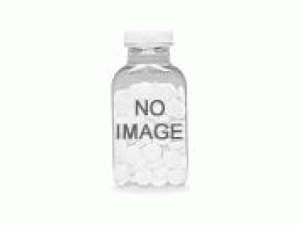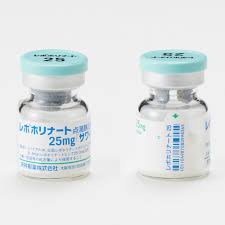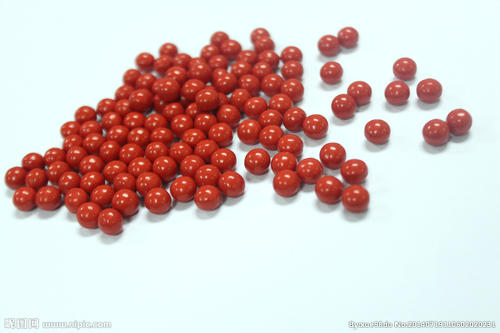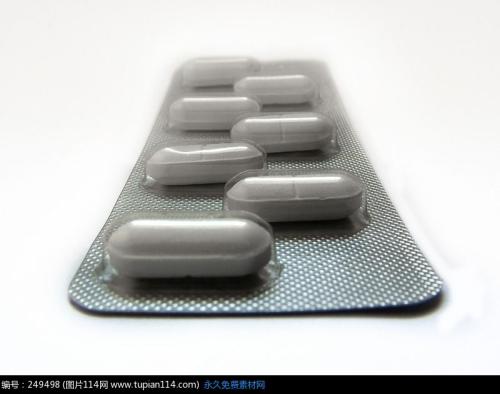链脲佐菌素冻干粉注射剂Zanosar 50mg/ml 20ml(streptozocin)说明书
 药店国别:
产地国家:美国
处方药:是
所属类别: 50毫克/毫升 20毫升/瓶
包装规格: 50毫克/毫升 20毫升/瓶
计价单位:瓶
生产厂家中文参考译名:
生产厂家英文名:SICOR PHARMACEUTICALS, INC
原产地英文商品名:ZANOSAR 50MG/ML 20ML SDV PF TV 1/EA
原产地英文药品名:STREPTOZOCIN
中文参考商品译名:链佐星冻干粉注射剂 50毫克/毫升 20毫升/瓶
中文参考药品译名:链唑霉素
曾用名:
简介:
部份中文链脲霉素处方资料(仅供参考)
【中文别名】
链氮霉素,链氮菌素,链佐星,葡萄亚硝脲。
【外 文 名】
Streptozotocin,Zanosat,Streptozocin.
【外文缩写】
STZ,SZC,STT,SZT。
【化 学 名】
N-d葡萄糖基(2)-N-亚硝基-早基脲。
【分 子 式】
C8H15N3O7。
【性 状】
本品为结晶性粉末,易溶于水,溶于较低度醇,不溶于极性的有机溶剂。
【药理作用】
本品为Stre.achromogenes Uar.128产生的亚硝脲类抗生素,它与脂溶性的亚硝脲不同,在氯乙基处是一个甲基,在分子的另一端是一个氨基糖。STZ可自行分解活泼的甲基正碳离子,与DNA呈链间交叉连结,从而使DNA烷化,但其烷化作用比其他亚硝脲类药物弱,而其代谢产物甲基亚硝脲的烷化作用较其STZ强3~4倍。STZ在体内可形成异氰酸盐。从而与核酸蛋白结合,抑制DNA多聚酶活力,使受损的DNA难于修复。在进行抗肿瘤研究过程中发现,STZ可使鼠类的血糖升高,在犬及猴可致糖尿病,且呈永久性。STZ的糖尿病作用具有种属差异性,在豚鼠不引起,在人亦不引起。其致糖尿病机制主要是由于胰岛细胞中菸酰胺腺嘌呤(DNA)含量减少,STZ分子中的葡萄糖基可使STZ进入胰岛β细胞,引起β细胞核内形态变化,使其染色体凝集、伸长和浓缩。
【体内过程】
给病人静脉注射本品后,血浆中初半衰期为5~15分钟,末期半衰期为35分种;给药后3小时血浆中即找不到STZ之原形,然其代谢产物地用药后24小时仍可在血浆中发现。STZ很少进入脑脊液,而其代谢产物则很易进入,给药后24小时脑脊液中浓度几乎与血浆浓度相等,给小鼠静脉注射后,肝肾中药物浓度最高。用药后44小时内,经小便排泄60%~72%,其中10%~20%为原形,其余为代谢产物。
【临床应用】
(1)主要用于姨岛细胞癌(β细胞或非β细胞癌),可使50%~60%的胰岛细胞癌患者行到缓解,与5-FU合用,疗效可提高。(2)对类癌肿瘤、霍奇金病、结肠癌及肝癌等变有一定疗效。
【用法用量】
静脉注射:每日1次,每次500mg/m2,连用5日,6周为1周期;或每周1次,初始2周每周1000mg/m2,若无明显疗效及毒性,可在后几周内逐渐增加剂量,但每次不应超1500mg/m2,一般起效总量为2000mg/m2,疗交最佳总量为4000mg/m2.动脉灌注:治疗肝转移病时可采用肝动脉插管经药。
【不良反应】
(1)本品毒性较低,无骨髓抑制作用。(2)胃肠道反应:呕吐发生率较高,于用药后1~4小时内出现,用氯丙嗪类药物难以控制。10%~30%的患者可有腹泻,肝中毒,转氨酶升高,低蛋白血症;可加重或引起十二指肠溃疡。(3)肾毒性:此为剂量限制性毒性,表现为肾小管、肾小球功能异常,严重损伤可邮于5%~10%的患者,蛋白尿、糖尿、酮尿、血清尿素氮及血清肌酐升高。(4)葡萄糖不耐受性:少数患者可出现轻度葡萄糖不耐受,血葡萄糖升高;对转移性胰岛瘤的治疗可引起瘤中胰岛素的释放,治疗后24小时内可出现低血糖昏迷。(5)其他反应:某些患者可产生过敏反应及中枢神经症状。
【禁 忌 证】
孕妇及严重肝功能低下者禁用。
【注意事项】
(1)本品不可皮下或肌肉注射,静脉注射亦应缓慢、谨慎,若漏出血管外应即刻冷敷,按局部反应处理。(2)本品为无透明水溶液,若有结晶析出或白色混浊,提示药液变质,不能使用。(3)用药过程中,应定期监测肝肾功能,一旦出现蛋白尿、肌酐清除率下降,则应停药,否则可能产生不可逆病变。(4)本品不宜用生理盐水或注射用水稀释,以免影响疗效,5%葡萄糖液稀释后可有一定缓冲作用,并能保持疗效。
【贮 藏】
室温下,阴凉处保存。
【包装规格】:
以下产品美国上市包装。不同规格不同价格,采购者以咨询为准。
英文版说明书
ZANOSAR VIALManufacture: SICOR PHARMACEUTICALS中文名: 链脲霉素Strength: 1GUnit/Case: 25Unit: EACHWARNINGZANOSAR should be administered under the supervision of a physician experienced in the use of cancer chemotherapeutic agents.A patient need not be hospitalized but should have access to a facility with laboratory and supportive resources sufficient to monitor drug tolerance and to protect and maintain a patient compromised by drug toxicity. Renal toxicity is dose-related and cumulative and may be severe or fatal. Other major toxicities are nausea and vomiting which may be severe and at times treatment-limiting.In addition, liver dysfunction, diarrhea, and hematological changes have been observed in some patients.Streptozocin is mutagenic. When administered parenterally, it has been found to be tumorigenic or carcinogenic in some rodents.The physician must judge the possible benefit to the patient against the known toxic effects of this drug in considering the advisabilityof therapy with ZANOSAR. The physician should be familiar with the following text before making a judgment and beginning treatment.DRUG DESCRIPTIONEach vial of ZANOSAR contains 1 g of the active ingredient streptozocin 2 -deoxy - 2 -[[(methylnitrosoamino)carbonyl]amino] - α(and β) - D - glucopyranose and 220 mg citric acid anhydrous.ZANOSAR is available as a sterile, pale yellow, freeze-dried preparation for intravenous administration. The pH was adjusted with sodium hydroxide.When reconstituted as directed, the pH of the solution will be between 3.5 and 4.5. Streptozocin is a synthetic antineoplastic agent that is chemically related to other nitrosoureas used in cancer chemotherapy. Streptozocin is an ivory-colored crystalline powder with a molecular weight of 265.2.It is very soluble in water or physiological saline and is soluble in alcohol. The structural formula is represented below:INDICATIONSZANOSAR is indicated in the treatment of metastatic islet cell carcinoma of the pancreas. Responses have been obtained with both functional and nonfunctional carcinomas. Because of its inherent renal toxicity, therapy with this drug should be limited to patients with symptomatic or progressive metastatic disease.DOSAGE AND ADMINISTRATIONZANOSAR should be administered intravenously by rapid injection or short/prolonged infusion. It is not active orally. Although it has been administered intraarterially, this is not recommended pending further eva luation of the possibility that adverse renal effects maybe evoked more rapidly by this route of administration.Two different dosage schedules have been employed successfully with ZANOSAR.Daily Schedule - The recommended dose for daily intravenous administration is 500 mg/m2 of body surface area for five consecutive days every six weeks until maximum benefit or until treatment-limiting toxicity is observed. Dose escalation on this schedule is not recommended.Weekly Schedule - The recommended initial dose for weekly intravenous administration is 1000 mg/m2 of body surface area atweekly intervals for the first two courses (weeks). In subsequent courses, drug doses may be escalated in patients who have not achieved a therapeutic response and who have not experienced significant toxicity with the previous course of treatment. However, A SINGLE DOSE OF 1500 mg/m2 BODY SURFACE AREA SHOULD NOT BE EXCEEDED as a greater dose may cause azotemia. When administered on this schedule, the median time to onset of response is about 17 days and the median time to maximum response is about 35 days.The median total dose to onset of response is about 2000 mg/m2 body surface area and the median total dose to maximum response is about 4000 mg/m2 body surface area.The ideal duration of maintenance therapy with ZANOSAR has not yet been clearly established for either of the above schedules.For patients with functional tumors, serial monitoring of fasting insulin levels allows a determination of biochemical response to therapy.For patients with either functional or nonfunctional tumors, response to therapy can be determined by measurable reductions of tumor size (reduction of organomegaly, masses, or lymph nodes).Reconstitute ZANOSAR with 9.5 mL of Dextrose Injection USP, or 0.9% Sodium Chloride Injection USP. The resulting pale-gold solution willcontain 100 mg of streptozocin and 22 mg of citric acid per mL.Where more dilute infusion solutions are desirable, further dilution in the above vehicles is recommended. The total storage time for streptozocin after it has been placed in solution should not exceed 12 hours. This product contains no preservatives and is not intendedas a multiple-dose vial.Caution in the handling and preparation of the powder and solution should be exercised, and the use of gloves is recommended. If the sterile powder of ZANOSAR or a solution prepared from ZANOSAR contacts the skin or mucosae, immedi-ately wash the affected area with soap and water.Procedures for proper handling and disposal of anticancer drugs should be considered. Several guidelines on this subject have been published.1-7 There is no general agreement that all of the procedures recommended in the guidelines are necessary or appropriate.HOW SUPPLIEDZANOSAR is supplied in 1 gram vials (NDC 0009-0844-01). Unopened vials of ZANOSAR should be stored at refrigeration temperatures (2°to 8°C) and protected from light (preferably stored in carton).REFERENCES1. Recommendations for the Safe Handling of Parenteral Antineoplastic Drugs, NIH Publication No. 83-2621. For sale by the Superintendent of Documents, U.S. Government Printing Office, Washington, DC 20402.2. AMA Council Report. Guidelines for Handling Parenteral Antineoplastics. JAMA. 1985; 2.53(11):1590-1592.3. National Study Commission on Cytotoxic Exposure - Recommendations for Handling Cytotoxic Agents. Available from Louis P. Jeffrey, ScD., Chairman, National Study Commission on Cytotoxic Exposure, Massachusetts College of Pharmacy and Allied Health Sciences, 179 Longwood Avenue, Boston, Massachusetts 02115.4. Clinical Oncological Society of Australia, Guidelines and Recommendations for Safe Handling of Antineoplastic Agents. Med J Australia, 1983; 1:426-428.5. Jones RB, et al: Safe Handling of Chemotherapeutic Agents: A Report from the Mount Sinai Medical Center. CA - A Cancer Journal for Clinicians, 1983; (Sept/Oct) 258-263.6. American Society of Hospital Pharmacists Technical Assistance Bulletin on Handling Cytotoxic and Hazardous Drugs. AM J. Hosp Pharm, 1990; 47:1033-1049.7. Controlling Occupational Exposure to Hazardous Drugs. (OSHA Work-Practice Guidelines), Am J Health-Syst Pharm, 1996; 53:1669-1685.Renal: See WARNINGS.Gastrointestinal: Most patients treated with ZANOSAR have experienced severe nausea and vomiting, occasionally requiring discontinuation of drug therapy. Some patients experienced diarrhea.A number of patients have experienced hepatic toxicity, as characterized by elevated liver enzyme (SGOT and LDH) levels and hypoalbuminemia.Hematological: Hematological toxicity has been rare, most often involving mild decreases in hematocrit values. However, fatal hematological toxicity with substantial reductions in leukocyte and platelet count has been observed.Metabolic: Mild to moderate abnormalities of glucose tolerance have been noted in some patients treated with ZANOSAR. These have generally been reversible, but insulin shock with hypoglycemia has been observed.Genitourinary: Two cases of nephrogenic diabetes insipidus following therapy with ZANOSAR have been reported. One had spontaneous recovery and the second responded to indomethacin.Post-marketing experience: Spontaneous reports have been received of local inflammation (i.e., edema, erythema, burning, tenderness) following extravasation of the product. In most cases, these events resolved the same day or within a few days.DRUG INTERACTIONSZANOSAR may demonstrate additive toxicity when used in combination with other cytotoxic drugs. Streptozocin has been reported to prolong the elimination half-life of doxorubicin and may lead to severe bone marrow suppression; a reduction of the doxorubicin dosage should be considered in patients receiving ZANOSAR concurrently. The concurrent use of streptozocin and phenytoin has been reported in one case to result in reduced streptozocin cytotoxicity.Renal ToxicityMany patients treated with ZANOSAR have experienced renal toxicity, as evidenced by azotemia, anuria, hypophosphatemia, glycosuria andrenal tubular acidosis.Such toxicity is dose-related and cumulative and may be severe or fatal.Renal function must be monitored before and after each course of therapy. Serial urinalysis, blood urea nitrogen, plasma creatinine,serum electrolytes and creatinine clearance should be obtained prior to, at least weekly during, and for four weeks after drug administration.Serial urinalysis is particularly important for the early detection of proteinuria and should be quantitated with a 24 hour collection when proteinuria is detected. Mild proteinuria is one of the first signs of renal toxicity and may herald further deterioration of renal function. Reduction of the dose of ZANOSAR or discontinuation of treatment is suggested in the presence of significant renal toxicity. Adequate hydration may help reduce the risk of nephrotoxicity to renal tubular epithelium by decreasing renal and urinary concentration of the drug and its metabolites.Use of ZANOSAR in patients with preexisting renal disease requires a judgment by the physician of potential benefit as opposed to the known risk of serious renal damage.This drug should not be used in combination with or concomitantly with other potential nephrotoxins.When exposed dermally, some rats developed benign tumors at the site of application of streptozocin. Consequently, streptozocin may posea carcinogenic hazard following topical exposure if not properly handled (see DOSAGE AND ADMINISTRATION).See additional warnings at the beginning of this insert.PRECAUTIONSInjection-Site ReactionsZANOSAR is irritating to tissues. Extravasation may cause severe tissue lesions and necrosis.Laboratory TestsPatients who are treated with ZANOSAR must be monitored closely, particularly for evidence of renal, hepatic, and hematopoietic toxicity. Renal function tests are described in the WARNINGS section. Patients should also be monitored closely for evidence of hematopoietic and hepatic toxicities. Complete blood counts and liver function tests should be done at least weekly. Dosage adjustments or discontinuance of the drug may be indicated, depending upon the degree of toxicity noted.Mutagenesis, Carcinogenesis, Impairment of FertilityStreptozocin is mutagenic in bacteria, plants, and mammalian cells.When administered parenterally, it has been shown to induce renal tumors in rats and to induce liver tumors and other tumors in hamsters. Stomach and pancreatic tumors were observed in rats treated orally with streptozocin. Streptozocin has also been shown to be carcinogenic in mice.Streptozocin adversely affected fertility when administered to male and female rats.Pregnancy Category DReproduction studies revealed that streptozocin is teratogenic in the rat and has abortifacient effects in rabbits. When administeredintravenously to pregnant monkeys, it appears rapidly in the fetal circulation. There are no studies in pregnant women. ZANOSAR shouldbe used during pregnancy only if the potential benefit justifies the potential risk to the fetus.Nursing MothersIt is not known whether streptozocin is excreted in human milk.Because many drugs are excreted in human milk and because of the potential for serious adverse reactions in nursing infants, nursingshould be discontinued in patients receiving ZANOSAR.Geriatric UseClinical studies of streptozocin did not include sufficient numbers of patients aged 65 years and older to determine whether there was adifference in either efficacy or toxicity as compared to younger patients. Other reported clinical experience has not identified differences in efficacy or safety between the elderly and younger patient populations. In general, dose selection for elderly patients should be cautious, usually starting at the low end of the dosing range, reflecting the greater frequency of decreased hepatic, renal, or cardiac function, and of concomitant disease or other drug therapy.
药店国别:
产地国家:美国
处方药:是
所属类别: 50毫克/毫升 20毫升/瓶
包装规格: 50毫克/毫升 20毫升/瓶
计价单位:瓶
生产厂家中文参考译名:
生产厂家英文名:SICOR PHARMACEUTICALS, INC
原产地英文商品名:ZANOSAR 50MG/ML 20ML SDV PF TV 1/EA
原产地英文药品名:STREPTOZOCIN
中文参考商品译名:链佐星冻干粉注射剂 50毫克/毫升 20毫升/瓶
中文参考药品译名:链唑霉素
曾用名:
简介:
部份中文链脲霉素处方资料(仅供参考)
【中文别名】
链氮霉素,链氮菌素,链佐星,葡萄亚硝脲。
【外 文 名】
Streptozotocin,Zanosat,Streptozocin.
【外文缩写】
STZ,SZC,STT,SZT。
【化 学 名】
N-d葡萄糖基(2)-N-亚硝基-早基脲。
【分 子 式】
C8H15N3O7。
【性 状】
本品为结晶性粉末,易溶于水,溶于较低度醇,不溶于极性的有机溶剂。
【药理作用】
本品为Stre.achromogenes Uar.128产生的亚硝脲类抗生素,它与脂溶性的亚硝脲不同,在氯乙基处是一个甲基,在分子的另一端是一个氨基糖。STZ可自行分解活泼的甲基正碳离子,与DNA呈链间交叉连结,从而使DNA烷化,但其烷化作用比其他亚硝脲类药物弱,而其代谢产物甲基亚硝脲的烷化作用较其STZ强3~4倍。STZ在体内可形成异氰酸盐。从而与核酸蛋白结合,抑制DNA多聚酶活力,使受损的DNA难于修复。在进行抗肿瘤研究过程中发现,STZ可使鼠类的血糖升高,在犬及猴可致糖尿病,且呈永久性。STZ的糖尿病作用具有种属差异性,在豚鼠不引起,在人亦不引起。其致糖尿病机制主要是由于胰岛细胞中菸酰胺腺嘌呤(DNA)含量减少,STZ分子中的葡萄糖基可使STZ进入胰岛β细胞,引起β细胞核内形态变化,使其染色体凝集、伸长和浓缩。
【体内过程】
给病人静脉注射本品后,血浆中初半衰期为5~15分钟,末期半衰期为35分种;给药后3小时血浆中即找不到STZ之原形,然其代谢产物地用药后24小时仍可在血浆中发现。STZ很少进入脑脊液,而其代谢产物则很易进入,给药后24小时脑脊液中浓度几乎与血浆浓度相等,给小鼠静脉注射后,肝肾中药物浓度最高。用药后44小时内,经小便排泄60%~72%,其中10%~20%为原形,其余为代谢产物。
【临床应用】
(1)主要用于姨岛细胞癌(β细胞或非β细胞癌),可使50%~60%的胰岛细胞癌患者行到缓解,与5-FU合用,疗效可提高。(2)对类癌肿瘤、霍奇金病、结肠癌及肝癌等变有一定疗效。
【用法用量】
静脉注射:每日1次,每次500mg/m2,连用5日,6周为1周期;或每周1次,初始2周每周1000mg/m2,若无明显疗效及毒性,可在后几周内逐渐增加剂量,但每次不应超1500mg/m2,一般起效总量为2000mg/m2,疗交最佳总量为4000mg/m2.动脉灌注:治疗肝转移病时可采用肝动脉插管经药。
【不良反应】
(1)本品毒性较低,无骨髓抑制作用。(2)胃肠道反应:呕吐发生率较高,于用药后1~4小时内出现,用氯丙嗪类药物难以控制。10%~30%的患者可有腹泻,肝中毒,转氨酶升高,低蛋白血症;可加重或引起十二指肠溃疡。(3)肾毒性:此为剂量限制性毒性,表现为肾小管、肾小球功能异常,严重损伤可邮于5%~10%的患者,蛋白尿、糖尿、酮尿、血清尿素氮及血清肌酐升高。(4)葡萄糖不耐受性:少数患者可出现轻度葡萄糖不耐受,血葡萄糖升高;对转移性胰岛瘤的治疗可引起瘤中胰岛素的释放,治疗后24小时内可出现低血糖昏迷。(5)其他反应:某些患者可产生过敏反应及中枢神经症状。
【禁 忌 证】
孕妇及严重肝功能低下者禁用。
【注意事项】
(1)本品不可皮下或肌肉注射,静脉注射亦应缓慢、谨慎,若漏出血管外应即刻冷敷,按局部反应处理。(2)本品为无透明水溶液,若有结晶析出或白色混浊,提示药液变质,不能使用。(3)用药过程中,应定期监测肝肾功能,一旦出现蛋白尿、肌酐清除率下降,则应停药,否则可能产生不可逆病变。(4)本品不宜用生理盐水或注射用水稀释,以免影响疗效,5%葡萄糖液稀释后可有一定缓冲作用,并能保持疗效。
【贮 藏】
室温下,阴凉处保存。
【包装规格】:
以下产品美国上市包装。不同规格不同价格,采购者以咨询为准。
英文版说明书
ZANOSAR VIALManufacture: SICOR PHARMACEUTICALS中文名: 链脲霉素Strength: 1GUnit/Case: 25Unit: EACHWARNINGZANOSAR should be administered under the supervision of a physician experienced in the use of cancer chemotherapeutic agents.A patient need not be hospitalized but should have access to a facility with laboratory and supportive resources sufficient to monitor drug tolerance and to protect and maintain a patient compromised by drug toxicity. Renal toxicity is dose-related and cumulative and may be severe or fatal. Other major toxicities are nausea and vomiting which may be severe and at times treatment-limiting.In addition, liver dysfunction, diarrhea, and hematological changes have been observed in some patients.Streptozocin is mutagenic. When administered parenterally, it has been found to be tumorigenic or carcinogenic in some rodents.The physician must judge the possible benefit to the patient against the known toxic effects of this drug in considering the advisabilityof therapy with ZANOSAR. The physician should be familiar with the following text before making a judgment and beginning treatment.DRUG DESCRIPTIONEach vial of ZANOSAR contains 1 g of the active ingredient streptozocin 2 -deoxy - 2 -[[(methylnitrosoamino)carbonyl]amino] - α(and β) - D - glucopyranose and 220 mg citric acid anhydrous.ZANOSAR is available as a sterile, pale yellow, freeze-dried preparation for intravenous administration. The pH was adjusted with sodium hydroxide.When reconstituted as directed, the pH of the solution will be between 3.5 and 4.5. Streptozocin is a synthetic antineoplastic agent that is chemically related to other nitrosoureas used in cancer chemotherapy. Streptozocin is an ivory-colored crystalline powder with a molecular weight of 265.2.It is very soluble in water or physiological saline and is soluble in alcohol. The structural formula is represented below:INDICATIONSZANOSAR is indicated in the treatment of metastatic islet cell carcinoma of the pancreas. Responses have been obtained with both functional and nonfunctional carcinomas. Because of its inherent renal toxicity, therapy with this drug should be limited to patients with symptomatic or progressive metastatic disease.DOSAGE AND ADMINISTRATIONZANOSAR should be administered intravenously by rapid injection or short/prolonged infusion. It is not active orally. Although it has been administered intraarterially, this is not recommended pending further eva luation of the possibility that adverse renal effects maybe evoked more rapidly by this route of administration.Two different dosage schedules have been employed successfully with ZANOSAR.Daily Schedule - The recommended dose for daily intravenous administration is 500 mg/m2 of body surface area for five consecutive days every six weeks until maximum benefit or until treatment-limiting toxicity is observed. Dose escalation on this schedule is not recommended.Weekly Schedule - The recommended initial dose for weekly intravenous administration is 1000 mg/m2 of body surface area atweekly intervals for the first two courses (weeks). In subsequent courses, drug doses may be escalated in patients who have not achieved a therapeutic response and who have not experienced significant toxicity with the previous course of treatment. However, A SINGLE DOSE OF 1500 mg/m2 BODY SURFACE AREA SHOULD NOT BE EXCEEDED as a greater dose may cause azotemia. When administered on this schedule, the median time to onset of response is about 17 days and the median time to maximum response is about 35 days.The median total dose to onset of response is about 2000 mg/m2 body surface area and the median total dose to maximum response is about 4000 mg/m2 body surface area.The ideal duration of maintenance therapy with ZANOSAR has not yet been clearly established for either of the above schedules.For patients with functional tumors, serial monitoring of fasting insulin levels allows a determination of biochemical response to therapy.For patients with either functional or nonfunctional tumors, response to therapy can be determined by measurable reductions of tumor size (reduction of organomegaly, masses, or lymph nodes).Reconstitute ZANOSAR with 9.5 mL of Dextrose Injection USP, or 0.9% Sodium Chloride Injection USP. The resulting pale-gold solution willcontain 100 mg of streptozocin and 22 mg of citric acid per mL.Where more dilute infusion solutions are desirable, further dilution in the above vehicles is recommended. The total storage time for streptozocin after it has been placed in solution should not exceed 12 hours. This product contains no preservatives and is not intendedas a multiple-dose vial.Caution in the handling and preparation of the powder and solution should be exercised, and the use of gloves is recommended. If the sterile powder of ZANOSAR or a solution prepared from ZANOSAR contacts the skin or mucosae, immedi-ately wash the affected area with soap and water.Procedures for proper handling and disposal of anticancer drugs should be considered. Several guidelines on this subject have been published.1-7 There is no general agreement that all of the procedures recommended in the guidelines are necessary or appropriate.HOW SUPPLIEDZANOSAR is supplied in 1 gram vials (NDC 0009-0844-01). Unopened vials of ZANOSAR should be stored at refrigeration temperatures (2°to 8°C) and protected from light (preferably stored in carton).REFERENCES1. Recommendations for the Safe Handling of Parenteral Antineoplastic Drugs, NIH Publication No. 83-2621. For sale by the Superintendent of Documents, U.S. Government Printing Office, Washington, DC 20402.2. AMA Council Report. Guidelines for Handling Parenteral Antineoplastics. JAMA. 1985; 2.53(11):1590-1592.3. National Study Commission on Cytotoxic Exposure - Recommendations for Handling Cytotoxic Agents. Available from Louis P. Jeffrey, ScD., Chairman, National Study Commission on Cytotoxic Exposure, Massachusetts College of Pharmacy and Allied Health Sciences, 179 Longwood Avenue, Boston, Massachusetts 02115.4. Clinical Oncological Society of Australia, Guidelines and Recommendations for Safe Handling of Antineoplastic Agents. Med J Australia, 1983; 1:426-428.5. Jones RB, et al: Safe Handling of Chemotherapeutic Agents: A Report from the Mount Sinai Medical Center. CA - A Cancer Journal for Clinicians, 1983; (Sept/Oct) 258-263.6. American Society of Hospital Pharmacists Technical Assistance Bulletin on Handling Cytotoxic and Hazardous Drugs. AM J. Hosp Pharm, 1990; 47:1033-1049.7. Controlling Occupational Exposure to Hazardous Drugs. (OSHA Work-Practice Guidelines), Am J Health-Syst Pharm, 1996; 53:1669-1685.Renal: See WARNINGS.Gastrointestinal: Most patients treated with ZANOSAR have experienced severe nausea and vomiting, occasionally requiring discontinuation of drug therapy. Some patients experienced diarrhea.A number of patients have experienced hepatic toxicity, as characterized by elevated liver enzyme (SGOT and LDH) levels and hypoalbuminemia.Hematological: Hematological toxicity has been rare, most often involving mild decreases in hematocrit values. However, fatal hematological toxicity with substantial reductions in leukocyte and platelet count has been observed.Metabolic: Mild to moderate abnormalities of glucose tolerance have been noted in some patients treated with ZANOSAR. These have generally been reversible, but insulin shock with hypoglycemia has been observed.Genitourinary: Two cases of nephrogenic diabetes insipidus following therapy with ZANOSAR have been reported. One had spontaneous recovery and the second responded to indomethacin.Post-marketing experience: Spontaneous reports have been received of local inflammation (i.e., edema, erythema, burning, tenderness) following extravasation of the product. In most cases, these events resolved the same day or within a few days.DRUG INTERACTIONSZANOSAR may demonstrate additive toxicity when used in combination with other cytotoxic drugs. Streptozocin has been reported to prolong the elimination half-life of doxorubicin and may lead to severe bone marrow suppression; a reduction of the doxorubicin dosage should be considered in patients receiving ZANOSAR concurrently. The concurrent use of streptozocin and phenytoin has been reported in one case to result in reduced streptozocin cytotoxicity.Renal ToxicityMany patients treated with ZANOSAR have experienced renal toxicity, as evidenced by azotemia, anuria, hypophosphatemia, glycosuria andrenal tubular acidosis.Such toxicity is dose-related and cumulative and may be severe or fatal.Renal function must be monitored before and after each course of therapy. Serial urinalysis, blood urea nitrogen, plasma creatinine,serum electrolytes and creatinine clearance should be obtained prior to, at least weekly during, and for four weeks after drug administration.Serial urinalysis is particularly important for the early detection of proteinuria and should be quantitated with a 24 hour collection when proteinuria is detected. Mild proteinuria is one of the first signs of renal toxicity and may herald further deterioration of renal function. Reduction of the dose of ZANOSAR or discontinuation of treatment is suggested in the presence of significant renal toxicity. Adequate hydration may help reduce the risk of nephrotoxicity to renal tubular epithelium by decreasing renal and urinary concentration of the drug and its metabolites.Use of ZANOSAR in patients with preexisting renal disease requires a judgment by the physician of potential benefit as opposed to the known risk of serious renal damage.This drug should not be used in combination with or concomitantly with other potential nephrotoxins.When exposed dermally, some rats developed benign tumors at the site of application of streptozocin. Consequently, streptozocin may posea carcinogenic hazard following topical exposure if not properly handled (see DOSAGE AND ADMINISTRATION).See additional warnings at the beginning of this insert.PRECAUTIONSInjection-Site ReactionsZANOSAR is irritating to tissues. Extravasation may cause severe tissue lesions and necrosis.Laboratory TestsPatients who are treated with ZANOSAR must be monitored closely, particularly for evidence of renal, hepatic, and hematopoietic toxicity. Renal function tests are described in the WARNINGS section. Patients should also be monitored closely for evidence of hematopoietic and hepatic toxicities. Complete blood counts and liver function tests should be done at least weekly. Dosage adjustments or discontinuance of the drug may be indicated, depending upon the degree of toxicity noted.Mutagenesis, Carcinogenesis, Impairment of FertilityStreptozocin is mutagenic in bacteria, plants, and mammalian cells.When administered parenterally, it has been shown to induce renal tumors in rats and to induce liver tumors and other tumors in hamsters. Stomach and pancreatic tumors were observed in rats treated orally with streptozocin. Streptozocin has also been shown to be carcinogenic in mice.Streptozocin adversely affected fertility when administered to male and female rats.Pregnancy Category DReproduction studies revealed that streptozocin is teratogenic in the rat and has abortifacient effects in rabbits. When administeredintravenously to pregnant monkeys, it appears rapidly in the fetal circulation. There are no studies in pregnant women. ZANOSAR shouldbe used during pregnancy only if the potential benefit justifies the potential risk to the fetus.Nursing MothersIt is not known whether streptozocin is excreted in human milk.Because many drugs are excreted in human milk and because of the potential for serious adverse reactions in nursing infants, nursingshould be discontinued in patients receiving ZANOSAR.Geriatric UseClinical studies of streptozocin did not include sufficient numbers of patients aged 65 years and older to determine whether there was adifference in either efficacy or toxicity as compared to younger patients. Other reported clinical experience has not identified differences in efficacy or safety between the elderly and younger patient populations. In general, dose selection for elderly patients should be cautious, usually starting at the low end of the dosing range, reflecting the greater frequency of decreased hepatic, renal, or cardiac function, and of concomitant disease or other drug therapy.
用药温馨提示:当您服用此药物时,需定期接受医疗专业人士的检查,以便随时针对其药效、副作用等情况进行监测。本网站所包含的信息旨在为患者提供帮助,不能代替医学建议和治疗。
药品价格查询,专业药品查询网站,药品说明书查询,药品比价 » 链脲佐菌素冻干粉注射剂Zanosar 50mg/ml 20ml(streptozocin)说明书
药品价格查询,专业药品查询网站,药品说明书查询,药品比价 » 链脲佐菌素冻干粉注射剂Zanosar 50mg/ml 20ml(streptozocin)说明书







